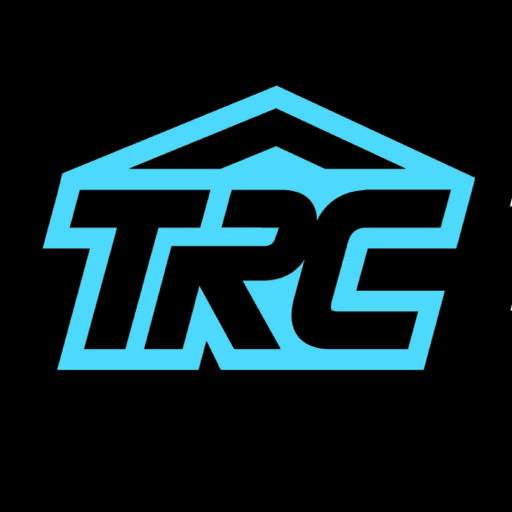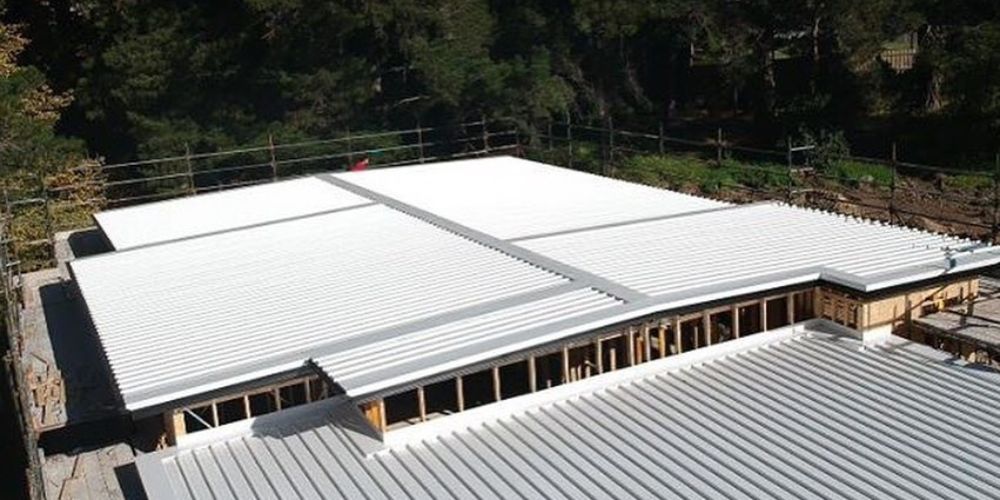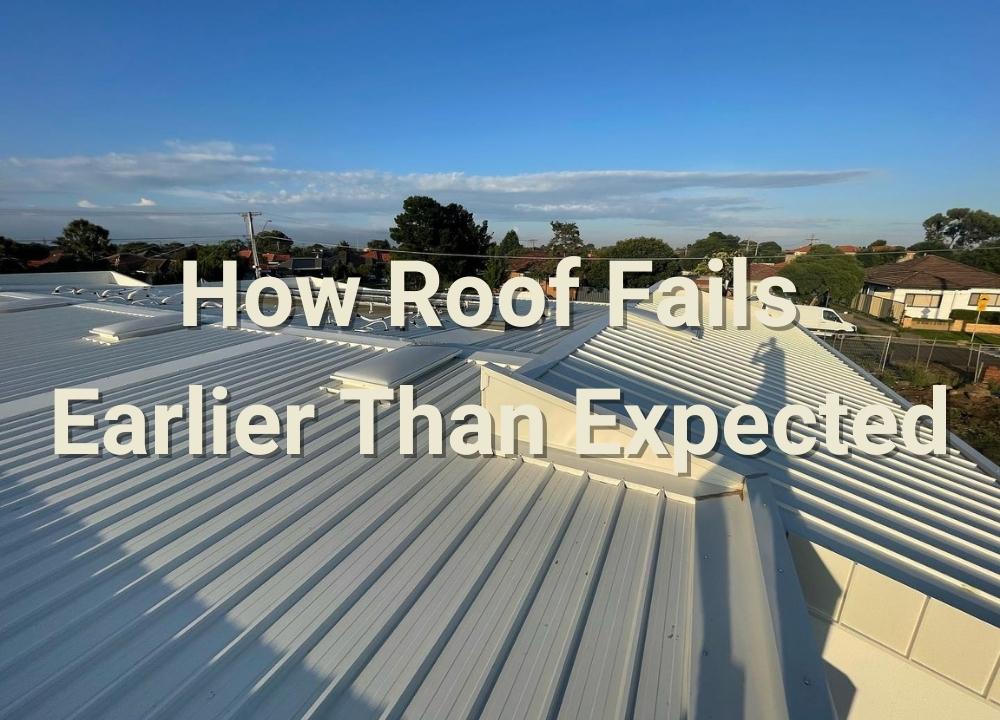How Roof Fails Earlier Than Expected
Your house is covered by and shielded by its roof. Despite how crucial it is to preserve it, we frequently forget about it. Most of the time, we don’t consider it until there is an issue. Even if you can’t always climb up there to check it out for yourself, it’s a good idea to be aware of the things that might harm your roof so you can be aware of possible damage.
The part of your house that offers the most protection is the roof. When it comes to roof repairs and upkeep, it is frequently disregarded. Since it is not in the homeowners’ direct line of sight, it is simple to overlook it when doing routine duties. Unfortunately, a roof’s shorter lifespan can be caused by various circumstances, such as extreme weather conditions, faulty installation, lack of ventilation and trapped moisture. The good news is that you can take some steps to ensure your roof lives a long and healthy life.

Lance Mathews
In This Article

What Causes Roof Failure
Extreme Weather Conditions
This should come as no surprise to roofing contractors. Extreme weather events can prematurely remove asphalt roofing shingles. Every time you combine poor materials with nature, a roof will collapse. The materials that were initially installed on your roof occasionally experience production flaws or adverse reactions to the weather. In this case, a roof that is otherwise sound can be destroyed by strong winds and hailstorms.
Faulty Installation
One of the leading causes of early failure is improper roof installation. Roofs are weakly resistant to heavy rain and high winds when not securely secured, making them vulnerable to blow-offs. Always outsource the task of handling roof repair projects to knowledgeable roofing firms. To ensure they receive the best possible craftsmanship and expertise, homeowners should conduct their research and thoroughly screen numerous firms. While the calibre of your roofing material is vital, the installation also significantly impacts how well the system works. Working with a professional is vital for this reason, among others. A licensed contractor will find the work simple since they know the proper methods, tools, and construction codes.
Lack of Ventilation
Roof longevity is directly impacted by attic ventilation. Too much heat might harm your roofing material and hasten degradation in cases where the underside of the roof has inadequate ventilation. As a result, the decking beneath the roof may slide imperceptibly and eventually break. Your roofing system stays in good shape with proper attic ventilation. Stop moisture formation, including bringing air into the region and exhausting it. Ensure your contractor inspects this area to address any problems as soon as they arise.
Trapped Moisture
You may have noticed a critical characteristic that all of these problems have, although each has the potential to harm your roof. These items allow moisture or water to enter, which is the main factor damaging your roof. You can stop water and moisture from deteriorating and harming your roof if you take care of everything else before or as it happens. Early roofing failure may result from damage to the decking and framing brought on by moisture from leaks or a lack of attic ventilation.
Flashing
Roof flashing is a thin strip of material that weatherproofs your roof’s borders, vents, and chimneys. One of the most frequent errors made by novice roofers is cutting shortcuts with flashing. Some use caulk to seal the punctured edges because they view the chimney flashing as an aesthetic element. Water infiltration may occur due to the material employed to seal the aperture degrading over time. If your flashing is broken, water may be able to enter your home through that spot and into your foundation. The cement used to seal the flashing may loosen or dry out with time and weather wear, resulting in water damage.
Early Warning Signs Your Roof is Starting to Fail
Ceiling Stains
Water stains that cover ceilings or trickle down walls are likely the result of a leaking roof. Finding the leak is difficult; fixing a roof leak is often relatively straightforward. We’ll demonstrate several easy methods for locating and fixing most of the typical leaky roofs. Even if it doesn’t affect you much or you’re getting a new roof next year, you should replace a leaky roof right now. Small leaks may cause significant issues like mildew, rotten sheathing and frame, ruined insulation, and damaged ceilings, even over a short period. A stain on your home’s ceiling seriously indicates that your roof needs to be examined or replaced. Although a plumbing leak may have caused the stain on the roof, if there is no plumbing above the stain or if the stain is right beneath the roof, this might be cause for worry.
Sagging Roof
Rarely does a roof fall all at once. Usually, certain areas begin to exhibit stress before others. Any portion of the ceiling that shows signs of drooping has to be looked into right away. Your roof may be weak and degrading, it may have been erected incorrectly, or it may be carrying too much weight, among other possibilities (snow, ice, etc.). Whatever the reason, roof drooping is an obvious signs that you need to renovate your roof. It might fall apart if you respond slowly.
Age of Roof
Rarely does a roof fall all at once. Usually, certain areas begin to exhibit stress before others. Any portion of the ceiling that shows signs of drooping has to be looked into right away. Your roof may be weak and degrading, it may have been erected incorrectly, or it may be carrying too much weight, among other possibilities (snow, ice, etc.). Whatever the reason, roof drooping is an obvious signs that you need to renovate your roof. It might fall apart if you respond slowly.
Increase in Heating and Cooling Bills
A rise in heating/cooling expenses might indicate various roofing problems. To begin with, moisture from a leak in your attic may swiftly deteriorate your insulation. Insulation breakdown results in heat loss in the winter or cold air egress in the summer. If this interruption continues, your energy cost will undoubtedly increase dramatically. Furthermore, it may indicate that your home lacks attic ventilation or a broken or leaky roof that allows for the exchange of good and bad air.
How To Take Care of Your Roof
Clean and Maintain the Gutters
Water can accumulate in gutters blocked with debris, harming the fascia on your roof. You may perform some of your gutters cleaning each year. Residential roof care includes ensuring that your gutters are clear of obstructions and clean throughout the year. Water may get into many problems if it can’t flow easily through your gutters and away from your house. Your gutters safeguard your roof by channelling water and debris away from your roof and house foundation when they are in excellent shape. You must maintain your gutters clear of leaves, sticks, and other debris so they can perform their function correctly.
Schedule Regular Inspection
One of the finest roof care advice is to have a qualified roofer give your roof a full check. There are many roof care tasks that you may perform on your own as a homeowner to safeguard your roof and lengthen its lifespan. Still, you risk missing damage or decay indicators that a professional will see immediately. Consider having a roof inspection performed once or twice a year or after bad storms if you want your roof to endure as long as possible and maintain its beautiful looks. Look for loose or damaged flashings, exposed parts, drooping or broken gutters, missing or damaged shingles, damaged drip edges, and gutter granules. Address any of these issues as soon as you become aware of them.
Frequently Asked Questions
Lack of maintenance. Although roofs are made to survive for many years, extreme weather conditions can damage them. When ignored, seemingly unimportant problems like leaks or missing shingles can become expensive.
Utility pipes or conduits at the ceiling that are bowed or bent. Shingles on the outside or portions of the interior ceiling have begun to droop. Windows or doors that are difficult to open or that automatically open. Strong or frequent leaks.
Tiles of concrete, clay, and slate typically last 100 years or more. Without question, these are some of the most expensive materials, but they are also the ones that endure the longest. Slate roofs are sometimes called the “forever roof” because of how long they appear to survive.
Exposure to the sun. Your roof may deteriorate more quickly if subjected to a lot of sunshine or UV radiation. This explains why south and west-facing roofs often deteriorate more quickly. These roofs absorb more heat and are more likely to age prematurely since they are exposed daily to the sun’s strongest rays.
Key Takeaways
Although it is one of the most neglected aspects of your house, your roof is your first line of protection. You need to get a qualified roofing contractor if you are seeing one or more of these warning signs of roof failure. The roofer will inspect your roof thoroughly and will then inform you of any issues. You can decide on roof replacement and repairs based on that information. You can perform some repairs and buy some more time before the roof needs to be replaced. You could discover that fixes are insufficient, nevertheless. It’s time to replace everything entirely. You need a dependable roofing contractor to do the work in any scenario.

